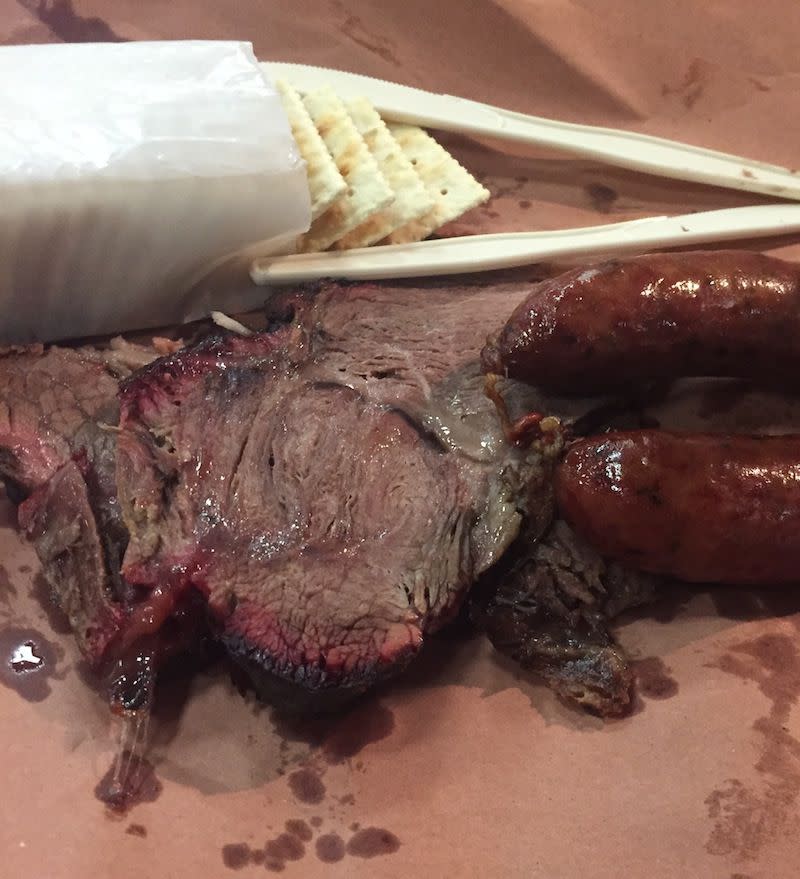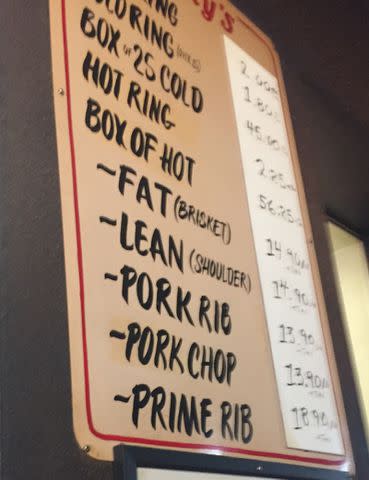Shoulder Clod Is A Forgotten Texas BBQ Star

In the world of Texas barbecue, brisket is the undisputed star, and the hefty beef rib has become the featured player—the one who gets big applause upon entering the stage. Then there's beef shoulder clod, which is, at best, a bit character actor, getting upstaged by smoked sausage and even turkey. But this hefty cut is inexpensive, lean, tender, and impressive, and it's worth seeking out when you're in Texas barbecue country. Here's what to know about shoulder clod and where you can try it.
What Is Shoulder Clod?
On a swing through central Texas, I got to sample the clod at places like Kreuz Market and Smitty's Market, both in Lockhart, and I came away quite impressed.
A shoulder clod is the size of a volleyball, checking in somewhere between 15 and 20 pounds. A thick cut, it tends to be cooked fairly quickly—just four and a half hours on the hot pit at Kreuz. It's a good bit leaner than brisket, and it has a much more intense beefy flavor, too. Since it's a thicker cut, it tends to not be smoky throughout, but the versions I tried had great crusty, smoky edges from the heat of the pit.
An Original Texas BBQ Star
What you might not realize is that, sort of like Mickey Rooney, shoulder clod used to be a big star before getting relegated to supporting roles. No one was smoking brisket in Texas until wholesalers started shipping vacuum-packed individual cuts in the 1960s. Before then, Texas meat markets would order entire forequarters of beef, carve off what they could sell as roasts, and smoke the leftover cuts—the chuck, the shoulder—on their barbecue pits.
Other Names for Shoulder Clod
It's too bad you don't see clod at more places in Texas these days, for it's a real treat to have both brisket and shoulder side by side to get a little contrast in texture and flavor. I suspect much of the cut's challenges might come down to its name, for—let's be honest—"beef shoulder clod" isn't exactly a name that sells. While it's also known as beef shoulder or beef chuck, shoulder clod is the name you're likely to see on a menu.
Perhaps all it needs is a little "brand image" makeover. At both Smitty's Market and Kreuz Market, the big menu boards give shoulder clod a little more of a spin, for their boards offer "(Fat) Brisket" next to "Lean (Shoulder)." Now, you might think this would help move the shoulder in this age of fat-phobia and nutritional nannyism, but I suspect those who are lining up next to the open-fire pit at Kreuz's aren't there for health food.

How about this: "Shoulder Deluxe, the King Cut of Beef!" Or perhaps just "Beef Royale"—get the shoulder out of it altogether, lest Texans associate it with pulled pork.
Cook Your Own Shoulder Clod
If you’re far from Texas, you can still sample a plate of shoulder clod. You aren’t likely to find it in grocery stores, but you can order it online and get it delivered to your door. Try out your pitmaster skills with cuts from meat markets like Simpson’s Meats in Knoxville, Tennessee, which sources cattle from Texas, Kansas, and Tennessee.
Who says shoulder clod can't make a comeback? I'm certainly rooting for it.
For more Southern Living news, make sure to sign up for our newsletter!
Read the original article on Southern Living.

